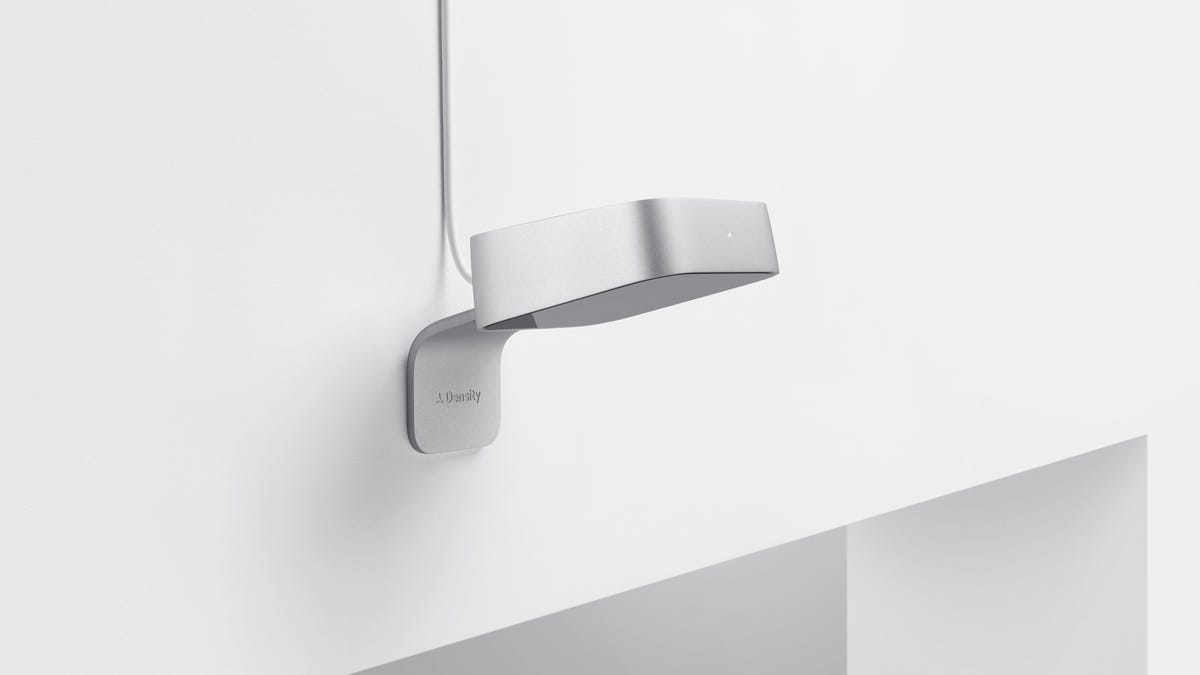Imagine a future without waiting in line
A startup called Density has built a people-counting sensor it says could be used to tell you how packed the gym is or which emergency room can see you the fastest.

The Density sensor sits above a doorframe and collects data about how many people are in a room.
Time is of the essence in an emergency.
The wait time to get treated in an emergency room is about 30 minutes with treatment itself averaging about 90 minutes, according to the Centers for Disease Control and Prevention. For anyone who has had to visit the ER, the faster you get treatment, the better.
This is one of the main scenarios startup Density believes it can tackle. It makes a sensor, which fits above a doorframe, that counts how many people are nearby, much like those people with clicker-counters who used to stand at the entrance to theme parks. This device, which launches Wednesday, uses infrared light. Its data is sent in real time to software that companies pay a monthly fee to access. The result is companies -- and even maybe you someday -- will see how many people are standing in line or crammed inside a building
"I would love to never have to wait in line at the DMV again," said CEO Andrew Farah, imagining what his technology could do.
In the case of ERs, having information on which ER is least crowded could give EMTs the chance to take a patient there instead of winding up at an ER that's slammed, or at least busier than usual.
Farah said one of the founders at Density worked as an EMT for a while and used to call hospitals while en route to find out which ones were at capacity.
"It's an archaic way of making decisions that could potentially affect someone's life," Farah said.
Density says its sensor tracks people anonymously.
Density has myriad uses. The company declined to name its customers but said it has begun work with hospitals, homeless shelter networks, universities, large startups, realtors, hospices, businesses examining the use of office space, and even a church diocese.
Companies have been tracking customer traffic for years. Initially, it was that person who stood at the entrance with a clicker. For the past couple decades, retailers have relied on sensors installed in their entryways to count how many people walk in the door. Density believes the next step is using more detailed sensors, that can actually decipher the difference between a door and a person. It also wants to hook that information into the internet, where it can be tracked in real time.
The sensor sees blobs essentially. It can tell the difference between a door and a person and provide enough detail to show one person putting an arm around another. But even if someone looks directly at the sensor, Density said, the sensor doesn't pick up an facial features. The sensor could even go into a bathroom, the company noted.
As the sensor is launching, the company is picking up $4 million in a funding round led by Upfront Ventures' Mark Suster.

